In the mini consumer drone competition, both Autel drones and DJI drones are constantly learning to improve. With DJI drones being the leading drone brand, the competition for consumer drones is getting fiercer with significantly competitive consumer drones in 2022, Autel EVO Nano+ , DJI Mini 3 , DJI Mini 3 Pro. Here we will carefully review the differences between the drones.
Curious about these three drones? We'll compare the strengths and weaknesses of each drone and offer the best suggested choices for drone enthusiasts in the Autel EVO Nano+ VS DJI Mini 3 VS DJI Mini 3 Pro.
DJI Mini 3 vs DJI Mini 3 Pro Compariso
 |
|
| DJI Mini 3 | DJI Mini 3 Pro |
| 1/1.3--12MP | 1/1.3--48MP |
| 4K/30fps | 4K/60fps |
| 2x Zoom | 2x Zoom |
| 38 mins | 34 mins |
| 10 km, 1080p | 12 km, 1080p |
| Only Downward sensor | Tri-Directional Obstacle Sensing |
| No Tracking shots | Focus Track |
Autel EVO Nano Plus vs DJI Mini 3 Pro Comparison
 |
|
| Autel Nano Plus | DJI Mini 3 Pro |
| 1/1.28--48MP | 1/1.3--48MP |
| 4K/30fps | 4K/60fps |
| 1-16x Zoom | 4x Zoom |
| 28 mins | 34 mins |
| 10 km, 1080p | 12 km, 1080p |
| Tri-Directional Obstacle Sensing | Tri-Directional Obstacle Sensing |
| FocusTrack | Focus Track |
| Timelapse | Timelapse |
Autel EVO Nano+ VS DJI Mini 3 VS DJI Mini 3 Pro: Release Date
The Autel EVO Nano+, DJI Mini 3 and DJI Mini 3 Pro are all new products for 2022, with excellent flight capabilities and powerful photography capabilities. The DJI Mini 3 and DJI Mini 3 Pro are identical in appearance, but the DJI Mini 3 has many features cut from the DJI Mini 3 Pro.

1. Drone images
Drones with cameras are standard for almost all consumer drones, and good drone imaging is one of the primary factors for many drone enthusiasts to purchase. autel EVO Nano+ , DJI Mini 3 , DJI Mini 3 Pro all support 4k photography, multiple shooting modes, one-touch cinematic lens, HD HDR imaging, and can be flown for drone beginners.
Autel EVO Nano+ has a 1/1.28-inch sensor with a large f/1.9 aperture and supports shooting 50MP stills and 4k/30fps HD video. The EVO Nano+ also supports digital zoom up to 16x to showcase telephoto capabilities.
The DJI Mini 3 has a 1/1.3-inch sensor with an f/1.7 aperture, and supports 12MP still photos and 4k/30fps motion video with 2x digital zoom. the DJI Mini 3 obviously has weaker imaging capabilities compared to the DJI Mini 3 pro, but it can be adjusted with HDR mode enabled when shooting 4K quality to highlight the contrast between light and dark.
DJI Mini 3 pro has a 4/3-inch sensor, a fixed aperture of f/1.7, supports shooting 48MP still photos and 4k/60fps motion video, and is capable of 2x digital zoom. DJI Mini 3 pro adds a dual ISO mode to the camera, and its imaging performance is not as good as HDR effect.
2. Drone flight capability
One of the greatest pleasures of buying a drone is flying, without having to master too many flying skills. Consumer drones have obvious intelligence, the ability to fly autonomously. When choosing an entry-level drone, you need to consider the drone's flight duration, flight mode, wind resistance, obstacle avoidance safety mode, whether there is an autonomous return mode.
Autel EVO Nano+ has a maximum takeoff altitude of 4000 meters, supports 700 meters of lift, has 5 levels of wind resistance, three flight modes, a maximum speed of 13m/s, a maximum flight time of 28 minutes, three obstacle avoidance functions, and a built-in GPS that supports one-touch return.
DJI Mini 3 has a maximum takeoff altitude of 4,000 meters, supports 500 meters of lift, has a level 5 wind resistance, three flight modes, a maximum speed of 16m/s, a maximum flight time of 34 minutes, and can reach 51 minutes with the intelligent flight battery plus. Only downward sensor, built-in GPS support a key return.
DJI Mini 3 pro maximum takeoff altitude of 4,000 meters, support for 500 meters of lift, with 5 levels of wind resistance, three flight modes, maximum speed of 16m / s, maximum flight time of 38 minutes, using the intelligent flight battery can reach 47 minutes. With three-way obstacle avoidance sensor, built-in GPS support a key return.
3. Drone map transfer capability
Autel EVO Nano+ uses Autel Skylink technology, with three frequency bands signal transmission, the drone will automatically retrieve the strong signal band to switch. EVO Nano+ drone maximum map distance of 10km, the remote control does not have a screen display, you need to use the phone.
DJI Mini 3 uses DJI O2 technology, with two frequency bands of signal transmission, the maximum distance of 10km, the remote control can choose to display with or without screen.
The DJI Mini 3 Pro uses DJI O3 technology, with two frequency bands of signal transmission and a maximum distance of 10km, and a remote control with or without screen display.
Among the choices of consumer drones, more and more drone brands are focusing more on enhancing the value of their drones. As a result, drone enthusiasts are able to easily choose the best drone for themselves from a selection of drones that cost less than $1000. Having a low-cost, high-value drone will make your flying trip more enjoyable.
In this competition between Autel EVO Nano+ VS DJI Mini 3 VS DJI Mini 3 Pro, the advantage of EVO Nano+ is the camera capability, while the advantage of Mini 3 series is more on the flight time. But I believe that shooting beautiful aerial scenes is something that every drone enthusiast would like to see.
see also:








